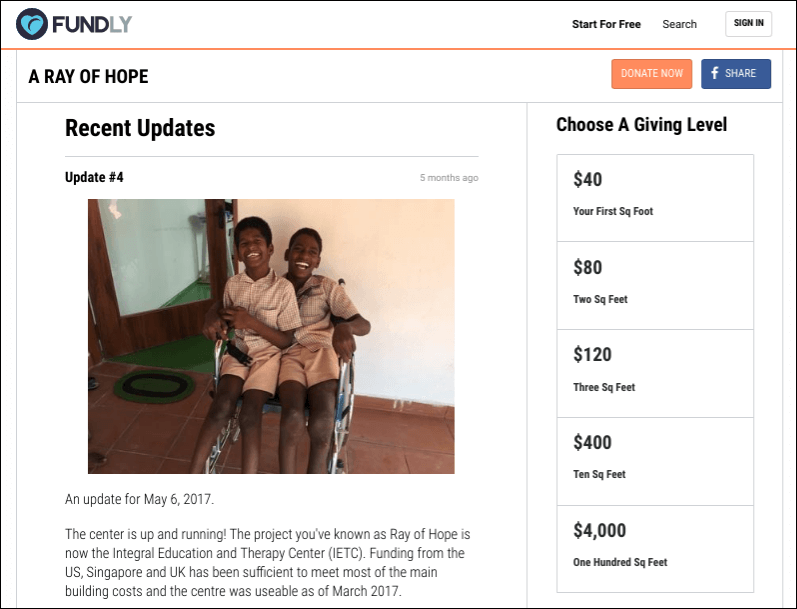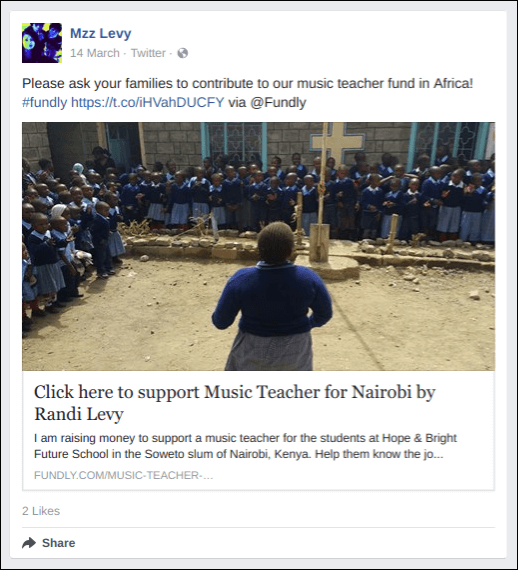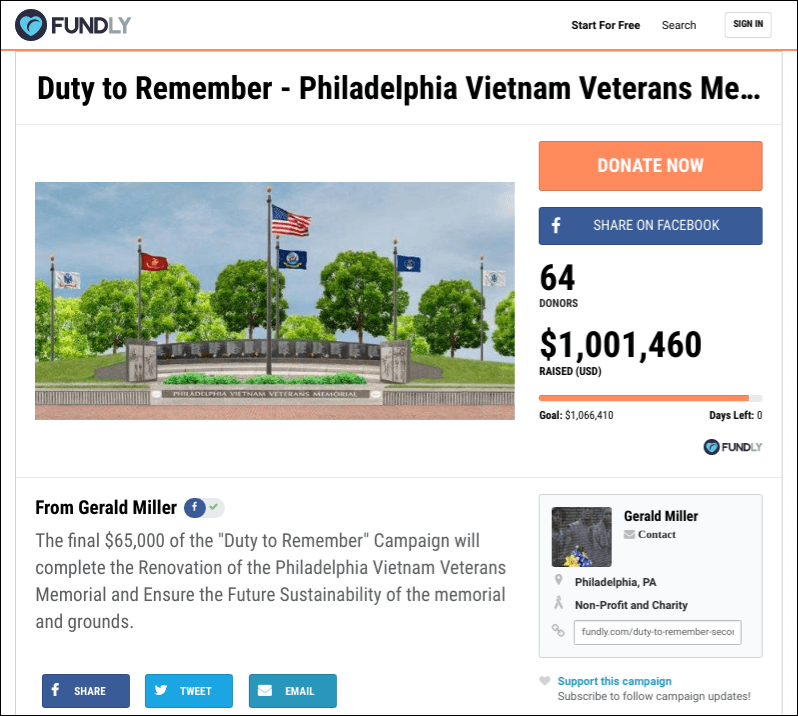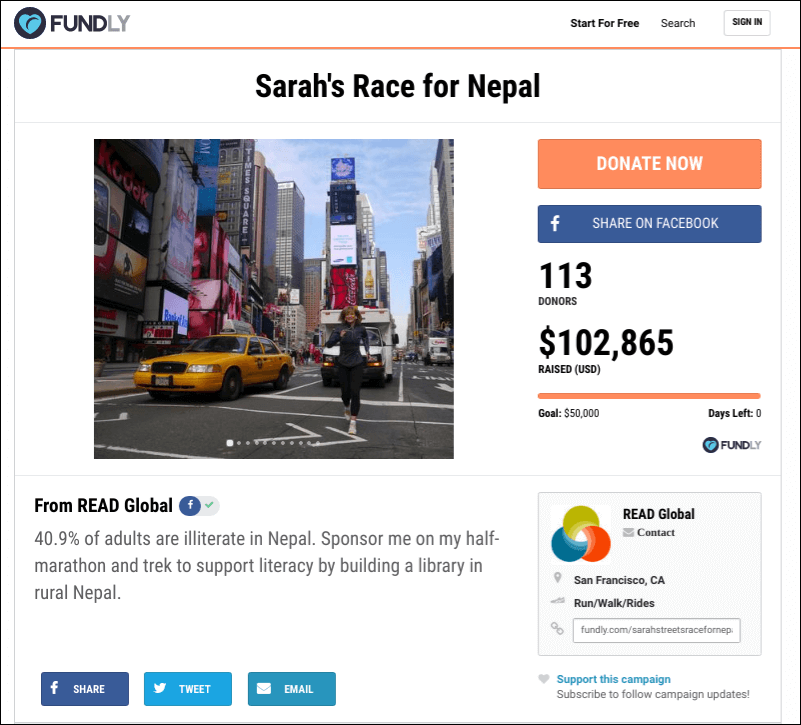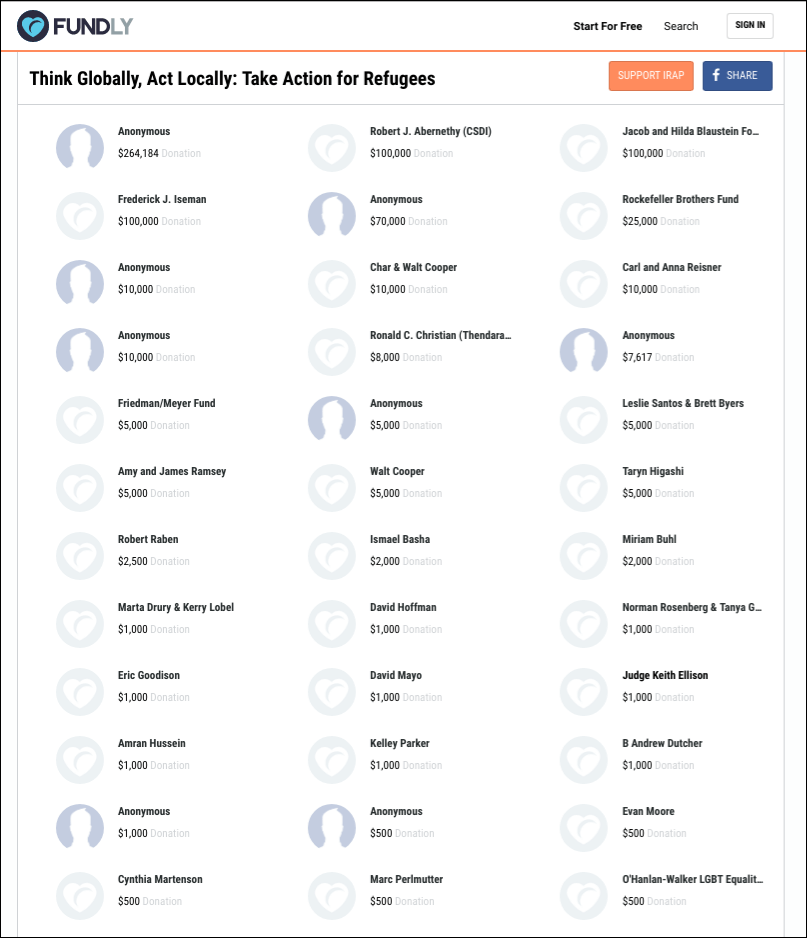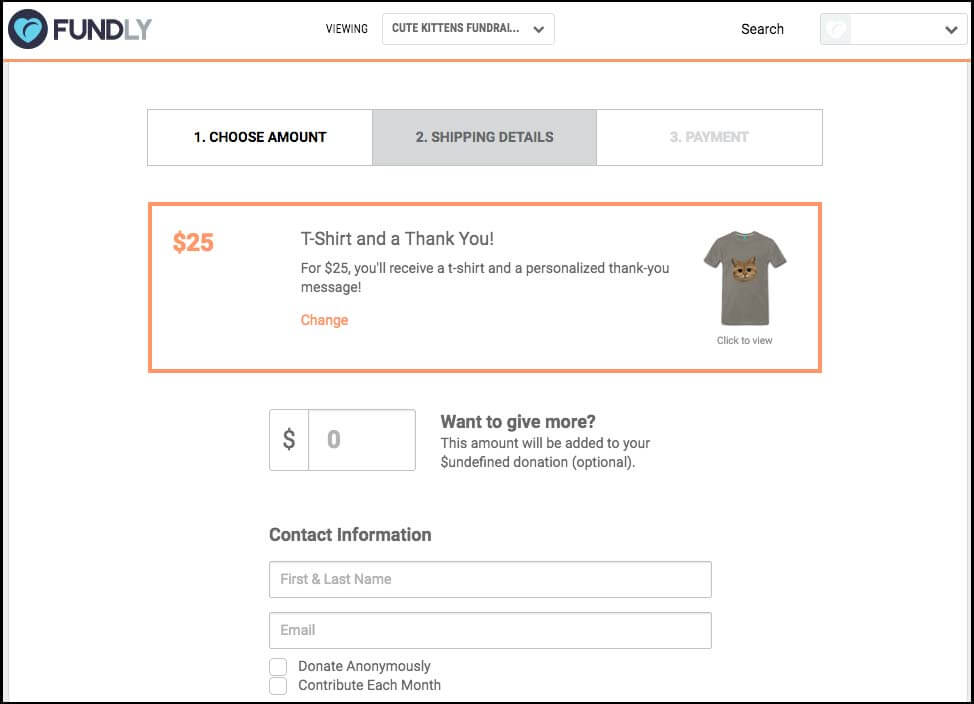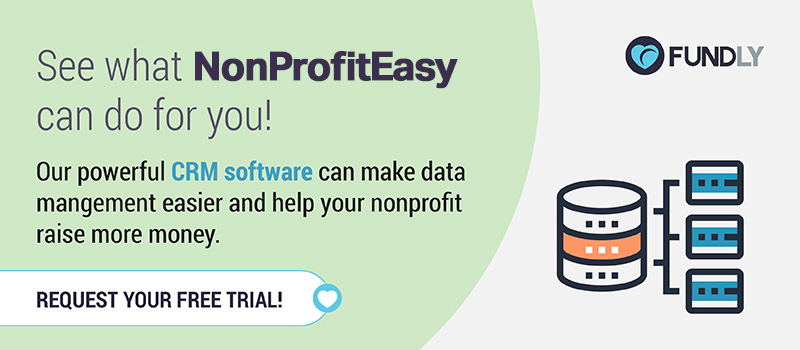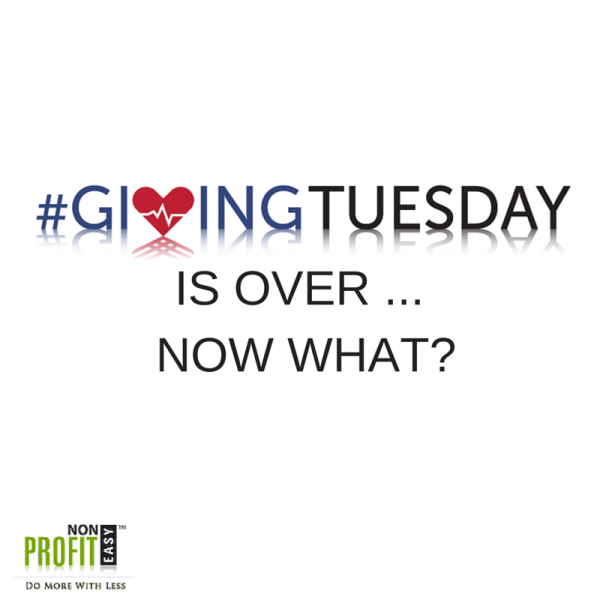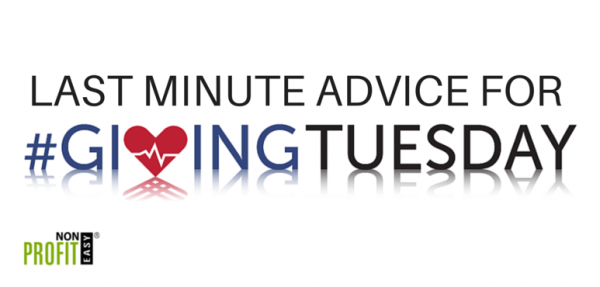Mastering Donor Acquisition: 9 Easy Steps for Success
Organizations value acquisition over retention at every giving level. Larger nonprofits tend to balance acquisition and retainment, but many smaller organizations don’t have the money or staff to do so.
Smaller nonprofits focus on retention, but they know that acquisition must be increased in order to raise more money.
The following best practices can help grow your donor population and keep your organization well-funded for years to come!
- Show potential donors how your nonprofit uses donations.
- Promote to donors online for better donor acquisition.
- Send direct mail for better donor acquisition.
- Take your fundraising online with crowdfunding campaigns.
- Provide exemplary stewardship to increase donor acquisition.
- Get creative at special events for increased donor acquisition.
- Focus on high-quality donors for the best donor acquisition rates.
- Use surveys and use them a lot.
- Give gifts in exchange for donations for better donor acquisition.
Let’s dive in!

1) Show potential donors how your nonprofit uses donations.
Showing donors specific evidence of how far their money will go can help to encourage donations from new sources.
Ray of Hope explains using their preset donations on their donation page what varying monetary donations do to help. This gives donors tangible evidence of how their money will be used, so they’re giving to something more concrete, as opposed to a nonprofit’s ambiguous overall budget.
Demonstrating the work your nonprofit does is a promotional act that can be performed through words, pictures, and other types of media:
- Share pictures of your work on social media.
- Send emails detailing what recent fundraising has allowed you to accomplish.
- Incorporate examples of your work on your website.
- Improve direct mail by showing donors exactly what their money goes towards.
‘Showing’ is about both citing specific evidence and showing that donations will go towards specific actions.
For example, showing a prospect that her money will go towards a specific event might lead to a donation. Being able to show that the money will go into a fund that’s specific to this discussed event assures the donor that her money truly is going to what you say it is going to, and not into an ambiguous or unspecified bank account.
Is there an opportunity to improve your organization’s fundraising? Take a look at our ultimate fundraising event checklist to find out!
In summary: Letting donors know how their funds will be used can lead to more donations because they’ll instantly know how their contributions will impact the people or communities you serve.
2) Promote to donors online for better donor acquisition.
The internet provides a bevy of options to both connect with and promote to donors. Not all online channels serve the same purpose, but they can all work together to acquire donors:
- Search engine marketing (SEM) — Advertising through Google and others search engines requires money, but it’s hard to raise money if you don’t spend some. You want your ads to attract people to your website in an effort to raise awareness for your nonprofit. Additionally, Google can offer up to $10,000 dollars in monthly Adwords spending to organizations that qualify for their Google Grants program.
- Social media — People who follow you on social media are generally more engaged with your nonprofit, and you have the chance to share meaningful content with them. This content, such as that shared by Ceres Community Project, should educate them about your organization, how to donate, and other relevant topics with the aim of acquiring email addresses.
- Email — Donor conversion through email averages about 33%. That’s a far cry from everyone you reach out to, but 1/3 is a desirable amount. The trick is to send the right messages at the right times, as you don’t want to overwhelm donors, give them extraneous information, or seem spammy and get blocked by internet service providers. If you do email right then you’ve got a great chance of acquiring more donors than you would through any other online medium.
In addition, adding a little variety to your organization’s outreach allows, you to interact with more potential donors.
In summary: Whether you use email, social media, search engine marketing, or a combination of all three, make sure to use these outlets not only to reach out to current donors but also to target new potential supporters.
3) Send direct mail for better donor acquisition.
The internet makes it easy to stay in touch with prospects, but some people crave a more intimate form of communication. Some fundraisers think that letters are out of date, but many older donors either don’t use or don’t respond to email.
Direct mail matters because older donors are often an organization’s biggest supporters.
An alternative to typical letters is to offer something for purchase that can be delivered through the mail, such as the cookbook offered by Ceres Community Project.
Not only is purchasing the cookbook a form of donating, but it must be mailed to the buyer, the cost of which is already covered by the purchase. This is a great opportunity to include more information about your organization in an attempt to turn a cooking enthusiast into a fully-acquired new donor.
Selling items, such as cookbooks, requires upfront costs, but it’s okay because you’ll be able to make it back in the future. Not only will many of your new donors give future gifts and recurring donations, but the amounts of those donations can increase over time.
In summary: Spending money to acquire new donors through direct mail is an investment in future donations that will more than cover the price of those initial mailings.
4) Take your fundraising online with crowdfunding campaigns.
Crowdfunding makes it easy to run specific fundraising campaigns.
Most software allows you to create a handsome webpage, share pictures, video, and other media to easily articulate your campaign, and process payments through a secure online service. Nonprofits can run multiple campaigns at once and manage them all on the go thanks to mobile compatibility.
The beauty of online fundraising is that it can help you to reach new donors. Many donations may come from loyal donors, but online campaigns make it easy for them to share your cause with friends and family through social media and email, so you stand a good chance of landing donations from new sources.
Online campaigns are also easy for nonprofits to promote to new prospects through their own social media profiles, email, and other online channels.
Learn about Fundly, a powerful online fundraising tool from NonProfitEasy.
In summary: Crowdfunding is an inexpensive way to widen your nonprofit’s reach and raise funds for your campaign. Best of all? There’s no limit to the number of crowdfunding campaigns you can launch.
5) Provide exemplary stewardship to increase donor acquisition.
People prefer to give online. It’s a safer, faster, and increasingly more credible way to raise funds.
Online fundraising also extends the opportunity to interact more with potential donors. You can share pictures, videos, links, and other informative content that can educate people and build the sort of goodwill that could lead to donations.
Stewardship extends beyond promotion. On top of marketing, the chance to interact with more donors means that you may receive more leads who want more information on your organization before donating. Your staff will likely interact with potential donors, and it’s important to treat prospects well from the start.
While your nonprofit might provide a great service to the world, people will judge your organization according to their interactions with your staff, so you want those experiences to be positive.
Ceres Community Project exerts great stewardship on their website.
They use language like, ‘our actions’, ‘together’, and ‘Join us!’ to convey a sense of inclusion in their community. They do a great job of conveying that their mission depends on a team effort that extends to both its donors and the community. The language is simple, but the impact can be large in how it could encourage new donations.
Another way to boost your nonprofit’s stewardship is by creating membership programs.
When donors sign up for your membership, they’re agreeing to make an annual or monthly contribution in return for discounts and other perks.
What’s great about membership programs is that donors get even more opportunities to interact with your organization, allowing you to cultivate long-lasting relationships.
When prospects form a positive affinity for your organization, you can begin a conversation about major gifts or planned giving.
Planned gifts are major gifts given in wills that can make a big difference for your organization. Receiving planned gifts is a long game, and the key to success is building great relationships that take foundation in a dedication to exemplary stewardship.
There are a lot of great resources available if organizations want to learn more about planned giving. It’s important to come prepared if your organization wants to start soliciting major or planned gifts.
In summary: If you want your donors to stick around, it’s important to make sure that your organization shows your appreciation so donors know you value more than just their money.
6) Get creative at special events for increased donor acquisition.
Similar to Sarah’s Race for literacy in Nepal, BATS Theatre is nonprofit dedicated to improving New Zealand performance work. Let’s say they host a show and pass around jars in which the audience is meant to place donations during the performance. The response is fine, but BATS receives only money and no names.
At the same show the next year, BATS disperses programs that contain envelopes and pencils. The audience is meant to write their names and contact information on the envelopes and place their donations inside. This time, the theatre not only raises money, but they acquire a host of new email addresses, too.
It’s one thing to acquire new donors and another thing to land new donors who you can ask for donations from again and again.
The concert fix is an example of a simple, creative solution that turns one-time donors into possible recurring donors.
Events of any kind are attractions that can bring new faces into contact with your nonprofit.
You can also implement fun activities such as raffles and games to help paint a positive image of your organization.
In summary: Events provide the perfect opportunity to rack in donations and the contact information of new donors.
7) Focus on high-quality donors for the best donor acquisition rates.
A one-time donor isn’t as valuable as a continual donor. Additionally, donors who give bigger gifts are more valuable than donors who give less.
Finding high-quality donors requires a focus on building relationships, as opposed to seeking donations. Money is what you want, but you’ll likely receive more money, and hopefully more than one donation, from people who feel a more intimate connection to your organization.
While major gift donors tend to be previous donors, and specifically mid-level donors, who, over time, decide to give more, you should try to predict which prospects might be apt to eventually become your major gift donors.
Pursuing prospects who won’t give as much or as frequently isn’t worth the time that could be spent talking to prospects who will give consistently, in large amounts, or both.
How do you know what to look for?
- Think about what characteristics your current loyal donors share.
- Find out if the prospect has a history of giving to other nonprofits.
- Look for wealth markers, such as real estate ownership, to gauge the prospect’s capacity to give.
- Ask questions that demonstrate if the prospect has an affinity for helping out causes like yours.
Your donation page can also do the work of encouraging people to become high-quality donors.
Mentor Me’s donation page has a few key features:
- A small button labeled ‘Monthly’, which gives donors the option to schedule automatic, recurring donations.
- A big blue button, which suggests that a nominal amount be added to the donation to counteract payment processing costs.
- Mentor Me requires that donors provide the full gamut of contact information, so that these new donors may be contacted to give future gifts.
The work of finding high-quality donors usually happens before someone lands on a donation page, but smart, subtle tweaks can help your donation page to encourage more people to give a little more or more frequently.
In summary: There’s not an exact science to knowing who will and won’t make a good donor, but looking for telling signs can help your nonprofit to dedicate its time to soliciting the right people, which should land you more high-quality prospects, more donations, and waste less of your fundraising resources.
Bonus! Learn how prospect research can help you find more major gift prospects.
8) Use surveys and use them a lot.
Many donors need to be provoked in order to speak up, and it’s an important responsibility for your nonprofit to seek what people think.
If you don’t know why people are giving, or why not, then you’re not learning how to improve fundraising appeals to new prospects.
Surveys need only ask the questions that your nonprofit wants answered, such as:
- What did you enjoy about the donation process?
- What could be improved or removed from the donation process?
- Why did you choose to give to our nonprofit?
- Why did you elect not to give to our nonprofit?
- How do you decide where to donate?
The questions on your surveys will be relative to your organization and timely needs. Request for people to participate in your survey after donating or send out the survey in a newsletter or its own email.
Try running a raffle or prize giveaway to encourage participation. Survey results become more statistically relevant with the more responses you receive.
Surveys don’t have to be forms, either physical or online. Mentor Me offers mentor roundtables to discuss the program, so they’re constantly learning what’s working, what’s not, and how the program might be improved.
Once you have your desired information, use the data to improve your fundraising appeals and who your fundraisers focus on.
In summary: Surveys should be used frequently, as your organization is always changing, people are changing, and the ways fundraising can be conducted are always being tweaked. Surveys supply the information to help your nonprofit stay ahead of the curve.
9) Give gifts in exchange for donations for better donor acquisition.
The people want tote bags, jackets, coupons, hats, pens, and anything that’s free. People love free stuff, and giving out nice gifts can help to encourage donations.
Many nonprofits give out gifts for a certain level of giving, such as a donor must give at least $50 to receive a free bag. Some nonprofits give out different gifts depending on the amount donated. What all gifts do is incentivize giving, as people are now not just helping a cause, but also receiving a nice gift in return for their philanthropy.
Raffles can be a type of gift giving to encourage donations, such as the wine cellar raffles held by Mentor Me. Not everyone wins, but the potential of winning encourages people to donate by purchasing tickets.
Not only does the winner feel good about being rewarded for a donation, but it’s fun for people to compete in a game of chance while knowing that, at the very least, their money is going towards a good cause.
Promote the gifts as part of your fundraising appeals, as some people might choose to donate to a cause that gives them something tangible in return for their money.
A gift might not only make the difference between no donation and a donation but the difference between a small and large gift, as people may jump to higher donation levels in order to receive a free gift.
In summary: Giving donors a gift with their donation can encourage new donors to support your mission and help you spread the word about your organization.
All nonprofits have a vast array of donor acquisition methods to choose from. Choose wisely, tailor the strategy to your organization, execute well, and never stop improving your tactics.
And don’t forget that great fundraising management can make your life so much easier!
Find out more information on donor acquisition with the following resources:
- Fundly’s Nonprofit CRMs: 11 Expert Tips. Looking for the right CRM for your organization? Check out our expert tips before you start shopping around!
- Double the Donation’s Top 10 Nonprofit CRM Vendors. Get the best of the best with Double the Donation’s list of top 10 CRM vendors for nonprofits like you!
- Salsa’s Donor Acquisition Best Tips. Still looking for help with donor acquisition? Check out Salsa’s best practices.



